Atlantic Ocean
 |
| Earth's oceans |
|---|
|
|

The Atlantic Ocean is the second largest of the world's oceanic divisions, following the Pacific Ocean. With a total area of about 106,400,000 square kilometres (41,100,000 sq mi),[1] it covers approximately 20 percent of the Earth's surface and about 29 percent of its water surface area. The first part of its name refers to Atlas of Greek mythology, making the Atlantic the "Sea of Atlas".
The oldest known mention of "Atlantic" is in The Histories of Herodotus around 450 BC (Hdt. 1.202.4): Atlantis thalassa (Greek: Ἀτλαντὶς θάλασσα; English: Sea of Atlas). The term Ethiopic Ocean, derived from Ethiopia, was applied to the southern Atlantic as late as the mid-19th century.[2] Before Europeans discovered other oceans, their term "ocean" was synonymous with the waters beyond the Strait of Gibraltar that are now known as the Atlantic. The early Greeks believed this ocean to be a gigantic river encircling the world.
The Atlantic Ocean occupies an elongated, S-shaped basin extending longitudinally between Eurasia and Africa to the east, and the Americas to the west. As one component of the interconnected global ocean, it is connected in the north to the Arctic Ocean, to the Pacific Ocean in the southwest, the Indian Ocean in the southeast, and the Southern Ocean in the south (other definitions describe the Atlantic as extending southward to Antarctica). The equator subdivides it into the North Atlantic Ocean and South Atlantic Ocean.
Geography

The Atlantic Ocean is bounded on the west by North and South America. It connects to the Arctic Ocean through the Denmark Strait, Greenland Sea, Norwegian Sea and Barents Sea. To the east, the boundaries of the ocean proper are Europe: the Strait of Gibraltar (where it connects with the Mediterranean Sea–one of its marginal seas–and, in turn, the Black Sea, both of which also touch upon Asia) and Africa.
In the southeast, the Atlantic merges into the Indian Ocean. The 20° East meridian, running south from Cape Agulhas to Antarctica defines its border. Some authorities show it extending south to Antarctica, while others show it bounded at the 60° parallel by the Southern Ocean.[3]
In the southwest, the Drake Passage connects it to the Pacific Ocean. The man-made Panama Canal links the Atlantic and Pacific. Besides those mentioned, other large bodies of water that form part of the Atlantic are the Caribbean Sea, the Gulf of Mexico, Hudson Bay, the Mediterranean Sea, the North Sea, the Baltic Sea, and the Celtic Sea.

Covering approximately 22% of Earth's surface, the Atlantic is second in size to the Pacific. With its adjacent seas, it occupies an area of about 106,400,000 square kilometres (41,100,000 sq mi);[1] without them, it has an area of 82,400,000 square kilometres (31,800,000 sq mi). The land that drains into the Atlantic covers four times that of either the Pacific or Indian oceans. The volume of the Atlantic with its adjacent seas is 354,700,000 cubic kilometers (85,100,000 cu mi) and without them 323,600,000 cubic kilometres (77,640,000 cu mi).
The average depth of the Atlantic with its adjacent seas, is 3,339 metres (1,826 fathoms; 10,955 ft); without them it is 3,926 metres (2,147 fathoms; 12,881 ft).[4] The greatest depth, Milwaukee Deep with 8,380 metres (4,580 fathoms; 27,490 ft), is in the Puerto Rico Trench.
Cultural significance

The Atlantic Ocean was named by the ancient Greeks after either Atlas the Titan or the Atlas Mountains named for him;[5][6] both involve the concept of holding up the sky. Transatlantic travel played a major role in the expansion of Western civilization into the Americas. It is the Atlantic that separates the "Old World" from the "New World".
In modern times, some idioms refer to the ocean in a humorously diminutive way as the Pond, describing both the geographical and cultural divide between North America and Europe, in particular between the English-speaking nations of both continents. Many Irish or British people refer to the United States and Canada as "across the pond", and vice versa.[7]
The "Black Atlantic" refers to the role of this ocean in shaping black people's history, especially through the Atlantic slave trade. Irish migration to the US is meant when the term "The Green Atlantic" is used. The term "Red Atlantic" has been used in reference to the Marxian concept of an Atlantic working class, as well as to the Atlantic experience of indigenous Americans. [8][9][10]
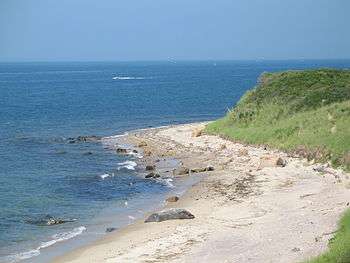
Ocean floor
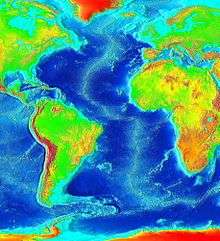
The principal feature of the bathymetry (bottom topography) is a submarine mountain range called the Mid-Atlantic Ridge.[11] It extends from Iceland in the north to approximately 58° South latitude, reaching a maximum width of about 860 nautical miles (1,590 km; 990 mi). A great rift valley also extends along the ridge over most of its length. The depth of water at the apex of the ridge is less than 2,700 metres (1,500 fathoms; 8,900 ft) in most places, while the bottom of the ridge is three times as deep. Several peaks rise above the water and form islands.[12] The South Atlantic Ocean has an additional submarine ridge, the Walvis Ridge.[13]
The Mid-Atlantic Ridge separates the Atlantic Ocean into two large troughs with depths from 3,700–5,500 metres (2,000–3,000 fathoms; 12,100–18,000 ft). Transverse ridges running between the continents and the Mid-Atlantic Ridge divide the ocean floor into numerous basins. Some of the larger basins are the Blake, Guiana, North American, Cape Verde, and Canaries basins in the North Atlantic. The largest South Atlantic basins are the Angola, Cape, Argentina, and Brazil basins.
The deep ocean floor is thought to be fairly flat with occasional deeps, abyssal plains, trenches, seamounts, basins, plateaus, canyons, and some guyots. Various shelves along the margins of the continents constitute about 11% of the bottom topography with few deep channels cut across the continental rise.
Ocean floor trenches and seamounts:
- Puerto Rico Trench, in the North Atlantic, is the deepest trench at 8,605 metres (4,705 fathoms; 28,232 ft)[14]
- Laurentian Abyss is found off the eastern coast of Canada
- South Sandwich Trench reaches a depth of 8,428 metres (4,608 fathoms; 27,651 ft)
- Romanche Trench is located near the equator and reaches a depth of about 7,454 metres (4,076 fathoms; 24,455 ft).
Ocean sediments are composed of:
- Terrigenous deposits with land origins, consisting of sand, mud, and rock particles formed by erosion, weathering, and volcanic activity on land washed to sea. These materials are found mostly on the continental shelves and are thickest near large river mouths or off desert coasts.
- Pelagic deposits, which contain the remains of organisms that sink to the ocean floor, include red clays and Globigerina, pteropod, and siliceous oozes. Covering most of the ocean floor and ranging in thickness from 60–3,300 metres (33–1,804 fathoms; 200–10,830 ft) they are thickest in the convergence belts, notably at the Hamilton Ridge and in upwelling zones.
- Authigenic deposits consist of such materials as manganese nodules. They occur where sedimentation proceeds slowly or where currents sort the deposits, such as in the Hewett Curve.
Water characteristics


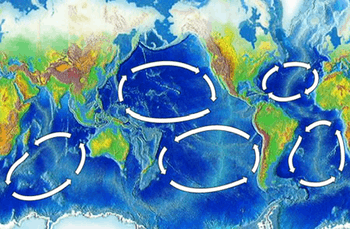
On average, the Atlantic is the saltiest major ocean; surface water salinity in the open ocean ranges from 33 to 37 parts per thousand (3.3 – 3.7%) by mass and varies with latitude and season. Evaporation, precipitation, river inflow and sea ice melting influence surface salinity values. Although the lowest salinity values are just north of the equator (because of heavy tropical rainfall), in general the lowest values are in the high latitudes and along coasts where large rivers enter. Maximum salinity values occur at about 25° north and south, in subtropical regions with low rainfall and high evaporation.
Surface water temperatures, which vary with latitude, current systems, and season and reflect the latitudinal distribution of solar energy, range from below −2 °C (28 °F) to over 30 °C (86 °F). Maximum temperatures occur north of the equator, and minimum values are found in the polar regions. In the middle latitudes, the area of maximum temperature variations, values may vary by 7–8 °C (13–14 °F).
The Atlantic Ocean consists of four major water masses. The North and South Atlantic central waters make up the surface. The sub-Antarctic intermediate water extends to depths of 1,000 metres (550 fathoms; 3,300 ft). The North Atlantic Deep Water reaches depths of as much as 4,000 metres (2,200 fathoms; 13,000 ft). The Antarctic Bottom Water occupies ocean basins at depths greater than 4,000 meters.
Within the North Atlantic, ocean currents isolate the Sargasso Sea, a large elongated body of water, with above average salinity. The Sargasso Sea contains large amounts of seaweed and is also the spawning ground for both the European eel and the American eel.
The Coriolis effect circulates North Atlantic water in a clockwise direction, whereas South Atlantic water circulates counter-clockwise. The south tides in the Atlantic Ocean are semi-diurnal; that is, two high tides occur during each 24 lunar hours. In latitudes above 40° North some east-west oscillation occurs.
Climate

Climate is influenced by the temperatures of the surface waters and water currents as well as winds. Because of the ocean's great capacity to store and release heat, maritime climates are more moderate and have less extreme seasonal variations than inland climates. Precipitation can be approximated from coastal weather data and air temperature from water temperatures.
The oceans are the major source of the atmospheric moisture that is obtained through evaporation. Climatic zones vary with latitude; the warmest zones stretch across the Atlantic north of the equator. The coldest zones are in high latitudes, with the coldest regions corresponding to the areas covered by sea ice. Ocean currents influence climate by transporting warm and cold waters to other regions. The winds that are cooled or warmed when blowing over these currents influence adjacent land areas.
The Gulf Stream and its northern extension towards Europe, the North Atlantic Drift, for example, warms the atmosphere of the British Isles and north-western Europe and influences weather and climate as far south as the northern Mediterranean. The cold water currents contribute to heavy fog off the coast of eastern Canada (the Grand Banks of Newfoundland area) and Africa's north-western coast. In general, winds transport moisture and air over land areas. Hurricanes develop in the southern part of the North Atlantic Ocean. More local particular weather examples could be found in examples such as the Azores High, Benguela Current, and Nor'easter.
History

The Atlantic Ocean appears to be the second youngest of the five oceans. It did not exist prior to 130 million years ago, when the continents that formed from the breakup of the ancestral super continent Pangaea were drifting apart. The Atlantic has been extensively explored since the earliest settlements along its shores.
The Norsemen, the Portuguese and the Spanish were the first to explore and to cross it systematically, from Europe to the Americas, as well as to its islands and archipelagos, and from the North Atlantic to the South Atlantic. It was after the voyages of Christopher Columbus in 1492, at the service of Castile (later Spain), that the Americas became well known in Europe and European exploration rapidly accelerated, leading to many new trade routes and the colonization of the Americas.
As a result, the Atlantic became and remains the major artery between Europe and the Americas (known as transatlantic trade). Scientific explorations include the Challenger expedition, the German Meteor expedition, Columbia University's Lamont-Doherty Earth Observatory and the United States Navy Hydrographic Office.
Notable crossings

- Around 600 - 400 BC, Hanno the Navigator explored West Africa and possibly reached and crossed the Gulf of Guinea and the Equator.
- Around 980 – 982, Erik the Red discovered Greenland, geographically and geologically a part of the Americas.
- In the year 1000, the Icelander Leif Ericson was the first European to set foot on North American soil, corresponding to today's Eastern coast of Canada, i.e., the province of Newfoundland and Labrador, including the area of land named "Vinland" by Ericson. The Norse discovery was documented in the 13th century Icelandic Sagas and was corroborated by recent L'Anse aux Meadows archeological evidence.
- Around 1010, Thorfinnr Karlsefni led an attempted Norsemen settlement in North America with 160 settlers, but was later driven off by the natives. His son Snorri Thorfinnsson was the first American born (somewhere between 1010 and 1013) to European (Icelandic) immigrant parents.
- In 1419 and 1427, Portuguese navigators reached Madeira and Azores, respectively.
- From 1415 to 1488, Portuguese navigators explored the Western African coast, crossed the Equator, and reached the South Atlantic, the Southern Hemisphere, and the Cape of Good Hope in the southern tip of Africa, entering the Indian Ocean.
- In 1492, Christopher Columbus crossed the Atlantic Ocean and landed on the Bahamas, Cuba and Hispaniola. He made three additional voyages over the next few years, during which he explored the Caribbean coast from Honduras to Venezuela as well as numerous Caribbean islands. These explorations, along with Columbus's attempts to establish a permanent settlement on Hispaniola, led to the European colonization of the Americas and a period of Columbian Exchange that permanently altered human cultures and the environment on both sides of the Atlantic. The establishment of the first transatlantic trade route provided a significant source of revenue to the Crown of Castile, leading to the development of the Spanish Empire. Communicable diseases, unintentionally brought from the Old World to the New World by Europeans, devastated the Amerindian populations, causing the deaths of an estimated 80-95% of the native population of the Americas within 150 years of Columbus's arrival.[15] Columbus also hoped to enslave the native residents of Hispaniola and transport them to Europe;[16] although unsuccessful in this endeavor, his efforts marked the beginning of the transatlantic slave trade that displaced an estimated 11-20 million people from Africa to the Americas over the next several centuries.[17]
- From 1496 to 1498 John Cabot made three voyages to North America from Bristol, landing in Newfoundland and/or possibly the Canadian Maritimes.
- In 1500, Pedro Álvares Cabral reached Brazil.
- In 1519 Ferdinand Magellan sailed from Spain to the South Atlantic, navigating the straits named after him and entering the Pacific Ocean.
- In 1524, Florentine explorer Giovanni da Verrazzano, in the service of the King Francis I of France, discovered the United States of America's east coast.
- In 1534, Jacques Cartier entered the Gulf of St. Lawrence and reached the mouth of the St. Lawrence River.
- In April 1563, Nicolas Barre and 20 other stranded Huguenots were the first to build a (crude) boat in the Americas and sail across the Atlantic. They sailed from Charlesfort, South Carolina to just off the coast of England where they were rescued by an English ship. Though they resorted to cannibalism, seven men survived the voyage, including Barre.[18][19]
- In 1764, William Harrison (the son of John Harrison) sailed aboard HMS Tartar, with the H-4 time piece. The voyage became the basis for the invention of the global system of Longitude.
- In 1858, Cyrus West Field laid the first transatlantic telegraph cable (it quickly failed).
- In 1865, Brunel's ship the SS Great Eastern laid the first successful transatlantic telegraph cable.
- In 1870, the small City of Ragusa (Dubrovnik) became the first small lifeboat to cross the Atlantic from Cork to Boston with two crew, John Charles Buckley and Nikola Primorac (di Costa).[20]
- In 1896, Frank Samuelsen and George Harbo from Norway became the first people to ever row across the Atlantic Ocean.
- On 15 April 1912 the RMS Titanic sank after hitting an iceberg with a loss of more than 1,500 lives.[21]
- On 7 May 1915 the RMS Lusitania was torpedoed en route to Queenstown, Ireland, at the loss of 1,198 passengers.
- 1914–1918, during the Atlantic U-boat campaign of World War I, more than 2,100 ships were sunk and 153 U-boats destroyed.
- In 1919, the American NC-4 became the first seaplane to cross the Atlantic (though it made a couple of landings on islands and the sea along the way, and taxied several hundred miles).
- Later in 1919, a British aeroplane piloted by Alcock and Brown made the first non-stop transatlantic flight, from Newfoundland to Ireland.
- In 1921, the British were the first to cross the North Atlantic in an airship.
- In 1922, Portuguese aviators Sacadura Cabral and Gago Coutinho were the First aerial crossing of the South Atlantic on a seaplane connecting Lisbon to Rio de Janeiro.
- In May 1927, Charles Nungesser and François Coli in their aircraft L'Oiseau Blanc (The White Bird) mysteriously disappeared in an attempt to make the first non-stop transatlantic flight from Paris to New York.
- In 1927, Charles Lindbergh made the first solo non-stop transatlantic flight in an aircraft (between New York City and Paris).
- In 1931, Bert Hinkler made the first solo non-stop transatlantic flight across the South Atlantic in an aircraft.
- In 1932, Amelia Earhart became the first female to make a solo flight across the Atlantic from Harbour Grace, Newfoundland to Derry, Northern Ireland.
- 1939–1945, during World War II, the Battle of the Atlantic resulted in nearly 3,700 ships sunk and 783 U-boats destroyed.[22]
- In 1952, Ann Davison was the first woman to single-handedly sail the Atlantic Ocean.
- In 1965, Robert Manry crossed the Atlantic from the U.S. to England non-stop in a 13.5-foot (4.1-meter) sailboat named "Tinkerbell".[23] Several others also crossed the Atlantic in very small sailboats in the 1960s, none of them non-stop, though.
- In 1969 and 1970 Thor Heyerdahl launched expeditions to cross the Atlantic in boats built from papyrus. He succeeded in crossing the Atlantic from Morocco to Barbados after a two-month voyage of 6,100 km with Ra II in 1970, thus conclusively proving that boats such as the Ra could have sailed with the Canary Current across the Atlantic in prehistoric times.[24]
- In 1980, Gérard d'Aboville was the first man to cross the Atlantic Ocean rowing solo.
- In 1984, Amyr Klink crossed the south atlantic rowing solo from Namibia to Brazil in 100 days.
- In 1984, five Argentines sail in a 10-meter-long raft made from tree trunks named Atlantis from Canary Islands and after 52 days 3,000 miles (4,800 km) journey arrived to Venezuela in an attempt to prove travelers from Africa may have crossed the Atlantic before Christopher Columbus.[25][26]
- In 1994, Guy Delage was the first man to allegedly swim across the Atlantic Ocean (with the help of a kick board, from Cape Verde to Barbados).
- In 1998, Benoît Lecomte was the first man to swim across the northern Atlantic Ocean without a kick board, stopping for only one week in the Azores.
- In 1999, after rowing for 81 days and 4,767 kilometres (2,962 miles), Tori Murden became the first woman to cross the Atlantic Ocean by rowboat alone when she reached Guadeloupe from the Canary Islands.
- In 2003 Alan Priddy and three crew members made a record crossing of the North Atlantic in a RIB from Newfoundland to Scotland, via Greenland and Iceland, in 103 hours.
Economy
The Atlantic has contributed significantly to the development and economy of surrounding countries. Besides major transatlantic transportation and communication routes, the Atlantic offers abundant petroleum deposits in the sedimentary rocks of the continental shelves. The Atlantic hosts the world's richest fishing resources, especially in the waters covering the shelves. The major fish are cod, haddock, hake, herring, and mackerel.
The most productive areas include the Grand Banks of Newfoundland, the Nova Scotia shelf, Georges Bank off Cape Cod, the Bahama Banks, the waters around Iceland, the Irish Sea, the Dogger Bank of the North Sea, and the Falkland Banks. Eel, lobster, and whales appear in great quantities. Various international treaties attempt to reduce pollution caused by environmental threats such as oil spills, marine debris, and the incineration of toxic wastes at sea.
Terrain
From October to June the surface is usually covered with sea ice in the Labrador Sea, Denmark Strait, and Baltic Sea. A clockwise warm-water gyre occupies the northern Atlantic, and a counter-clockwise warm-water gyre appears in the southern Atlantic. The Mid-Atlantic Ridge, a rugged north-south centerline for the entire Atlantic basin, first discovered by the Challenger Expedition dominates the ocean floor. This was formed by the vulcanism that also formed the ocean floor and the islands rising from it.
The Atlantic has irregular coasts indented by numerous bays, gulfs, and seas. These include the Norwegian Sea, Baltic Sea, North Sea, Labrador Sea, Black Sea, Gulf of Saint Lawrence, Bay of Fundy, Gulf of Maine, Mediterranean Sea, Gulf of Mexico, and Caribbean Sea.
Islands include Newfoundland (including hundreds of surrounding islands), Greenland, Iceland, Faroe Islands, British Isles (including Great Britain and Ireland), Rockall, Sable Island, Azores, St. Pierre and Miquelon, Madeira, Bermuda, Canary Islands, Caribbean Islands (including Greater Antilles, Leeward Islands, Windward Islands, Leeward Antilles), Cape Verde, São Tomé and Príncipe, Annobón Province, Fernando de Noronha, Rocas Atoll, Ascension Island, Saint Helena, Trindade and Martim Vaz, Tristan da Cunha, Gough Island (Also known as Diego Alvarez), Falkland Islands, Tierra del Fuego, South Georgia Island, South Sandwich Islands, and Bouvet Island.
Natural resources
The Atlantic harbors petroleum and gas fields, fish, marine mammals (seals and whales), sand and gravel aggregates, placer deposits, polymetallic nodules, and precious stones.
Natural hazards

Icebergs are common from February to August in the Davis Strait, Denmark Strait, and the northwestern Atlantic and have been spotted as far south as Bermuda and Madeira. Ships are subject to superstructure icing in the extreme north from October to May. Persistent fog can be a maritime hazard from May to September, as can hurricanes north of the equator (May to December).
The United States' southeast coast has a long history of shipwrecks due to its many shoals and reefs. The Virginia and North Carolina coasts were particularly dangerous.
The Bermuda Triangle is popularly believed to be the site of numerous aviation and shipping incidents because of unexplained and supposedly mysterious causes, but Coast Guard records do not support this belief.
Hurricanes are also a natural hazard in the Atlantic, but mainly in the northern part of the ocean, rarely tropical cyclones form in the southern parts. Hurricanes usually form between 1 June and 30 November of every year.
Current environmental issues
Endangered marine species include the manatee, seals, sea lions, turtles, and whales. Drift net fishing can kill dolphins, albatrosses and other seabirds (petrels, auks), hastening the fish stock decline and contributing to international disputes.[27] Municipal pollution comes from the eastern United States, southern Brazil, and eastern Argentina; oil pollution in the Caribbean Sea, Gulf of Mexico, Lake Maracaibo, Mediterranean Sea, and North Sea; and industrial waste and municipal sewage pollution in the Baltic Sea, North Sea, and Mediterranean Sea.
In 2005, there was some concern that warm northern European currents were slowing down.[28]
On 7 June 2006, Florida's wildlife commission voted to take the manatee off the state's endangered species list. Some environmentalists worry that this could erode safeguards for the popular sea creature.
Marine pollution
Marine pollution is a generic term for the entry into the ocean of potentially hazardous chemicals or particles. The biggest culprits are rivers and with them many agriculture fertilizer chemicals as well as livestock and human waste. The excess of oxygen-depleting chemicals leads to hypoxia and the creation of a dead zone.[29]
Marine debris, which is also known as marine litter, describes human-created waste floating in a body of water. Oceanic debris tends to accumulate at the center of gyres and coastlines, frequently washing aground where it is known as beach litter.
Bordering countries and territories
The states (territories in italics) with a coastline on the Atlantic Ocean (excluding the Black, Baltic and Mediterranean Seas) are:
Europe
-
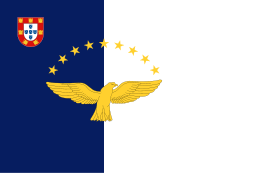 Azores (PRT)
Azores (PRT) -
.svg.png) Belgium
Belgium -
 Denmark
Denmark -
 Faroe Islands (DEN)
Faroe Islands (DEN) -
 France
France -
 Germany
Germany -
 Guernsey (UK)
Guernsey (UK) -
 Iceland
Iceland -
 Ireland
Ireland -
 Isle of Man (UK)
Isle of Man (UK) -
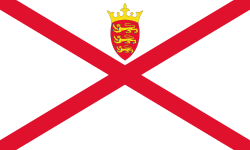 Jersey (UK)
Jersey (UK) -
 Netherlands
Netherlands -
 Norway
Norway -
 Portugal
Portugal -
 Spain
Spain -
 United Kingdom
United Kingdom
Africa
-
 Angola
Angola -
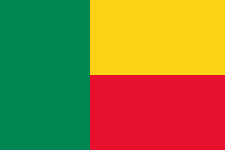 Benin
Benin -
 Bouvet Island (NOR)
Bouvet Island (NOR) -
 Cameroon
Cameroon -
 Canary Islands (ESP)
Canary Islands (ESP) -
 Cape Verde
Cape Verde -
 Democratic Republic of the Congo
Democratic Republic of the Congo -
 Equatorial Guinea
Equatorial Guinea -
 Gabon
Gabon -
 Gambia
Gambia -
 Ghana
Ghana -
 Guinea
Guinea -
 Guinea-Bissau
Guinea-Bissau -
 Ivory Coast
Ivory Coast -
 Liberia
Liberia -
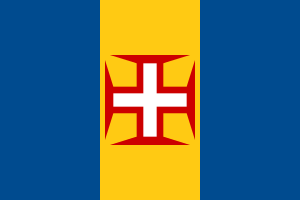 Madeira (PRT)
Madeira (PRT) -
 Mauritania
Mauritania -
 Morocco
Morocco -
 Namibia
Namibia -
 Nigeria
Nigeria -
 Republic of the Congo
Republic of the Congo -
 Saint Helena, Ascension and Tristan da Cunha (UK)
Saint Helena, Ascension and Tristan da Cunha (UK) -
 São Tomé and Príncipe
São Tomé and Príncipe -
 Senegal
Senegal -
 Sierra Leone
Sierra Leone -
 South Africa
South Africa -
 Togo
Togo -
 Western Sahara (claimed by Morocco) (MAR)
Western Sahara (claimed by Morocco) (MAR)
South America
North and Central America
Caribbean
-
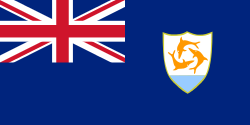 Anguilla (UK)
Anguilla (UK) -
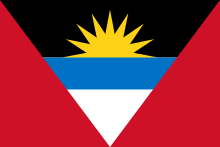 Antigua and Barbuda
Antigua and Barbuda -
 Aruba (NED)
Aruba (NED) -
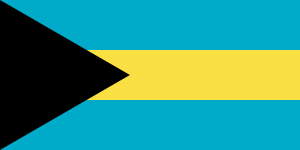 Bahamas
Bahamas -
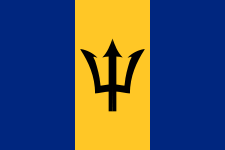 Barbados
Barbados -
 Bonaire (NED)
Bonaire (NED) -
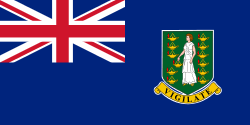 British Virgin Islands (UK)
British Virgin Islands (UK) -
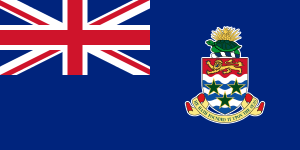 Cayman Islands (UK)
Cayman Islands (UK) -
 Cuba
Cuba -
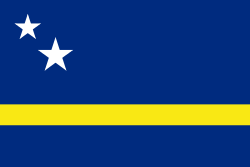 Curaçao (NED)
Curaçao (NED) -
 Dominica
Dominica -
 Dominican Republic
Dominican Republic -
.svg.png) Guadeloupe (FRA)
Guadeloupe (FRA) -
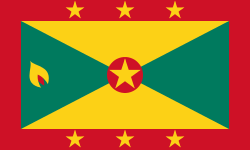 Grenada
Grenada -
 Haiti
Haiti -
 Jamaica
Jamaica -
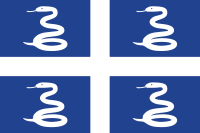 Martinique (FRA)
Martinique (FRA) -
 Montserrat (UK)
Montserrat (UK) -
 Saba (NED)
Saba (NED) -
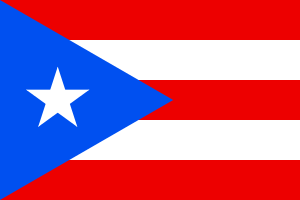 Puerto Rico (USA)
Puerto Rico (USA) -
.svg.png) Saint Barthélemy (FRA)
Saint Barthélemy (FRA) -
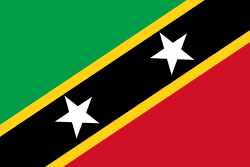 Saint Kitts and Nevis
Saint Kitts and Nevis -
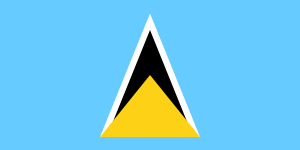 Saint Lucia
Saint Lucia -
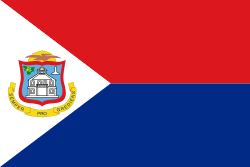 Sint Maarten (NED)
Sint Maarten (NED) -
 Saint Martin (FRA)
Saint Martin (FRA) -
 Saint Vincent and the Grenadines
Saint Vincent and the Grenadines -
 Sint Eustatius (NED)
Sint Eustatius (NED) -
 Trinidad and Tobago
Trinidad and Tobago -
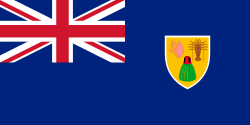 Turks and Caicos Islands (UK)
Turks and Caicos Islands (UK) -
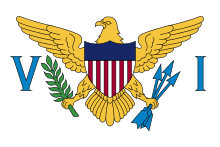 United States Virgin Islands (USA)
United States Virgin Islands (USA)
Major ports and harbours
See also
- Ocean Highway
- Seven Seas
- Borders of the oceans#Atlantic Ocean
- Gulf Stream shutdown
- History of the Atlantic Ocean articles
- Shipwrecks in the Atlantic Ocean
- Atlantic hurricanes
- Territories of the United States on stamps#Explorers
References
- 1 2 "The New Encyclopædia Britannica", Volume 2, Encyclopædia Britannica, 1974. p. 294
- ↑ George Ripley; Charles Anderson Dana (1873). The American cyclopaedia: a popular dictionary of general knowledge. Appleton. pp. 69–. Retrieved 15 April 2011.
- ↑ Limits of Oceans and Seas. International Hydrographic Organization Special Publication No. 23, 1953.
- ↑ Amanda Briney, "Geography of the World's Oceans". About Education. Retrieved 2015-05-22.
- ↑ Merriam-Webster, Merriam-Webster Unabridged, Merriam-Webster.
- ↑ Houghton Mifflin Harcourt, American Heritage Dictionary of the English Language (5th ed.), Houghton Mifflin Harcourt.
- ↑ Example: BBC Click – Episode 4 April 2009
- ↑ David, Armitage. "The Red Atlantic". Project MUSE. Retrieved 28 October 2012.
- ↑ http://uncpress.unc.edu/books/11603.html
- ↑ http://web-facstaff.sas.upenn.edu/~cavitch/pdf-library/Armitage_ThreeConcepts.pdf
- ↑ Kenneth J. Hsü (1992). The Challenger at Sea: A Ship That Revolutionized Earth Science. p. 57. ISBN 978-0-691-08735-1.
- ↑ Kenneth J. Hsü (1987). The Mediterranean Was a Desert: A Voyage of the Glomar Challenger. ISBN 978-0-691-02406-6.
- ↑ National Geographic Atlas of the World: Revised Sixth Edition, National Geographic Society, 1992
- ↑ Milwaukee Deep. sea-seek.com
- ↑ Nunn, Nathan; Qian, Nancy (2010). "The Columbian Exchange: A History of Disease, Food, and Ideas". Journal of Economic Perspectives 24 (2): 163–188. doi:10.1257/jep.24.2.163.
- ↑ Zinn, Howard (2011). The Zinn Reader: Writings on Disobedience and Democracy. New York: Seven Stories Press. p. 516. ISBN 9781583229460.
- ↑ M’bokolo, Elikia. "The impact of the slave trade on Africa". Le Monde diplomatique.
- ↑ http://churchmousec.wordpress.com/2013/08/27/the-huguenot-settlement-in-16th-century-south-carolina
- ↑ http://www.jcs-group.com/oldwest/america/1562ribaut.html
- ↑ William H. Longyard (2003). A speck on the sea: epic voyages in the most improbable vessels. International Marine/Ragged Mountain Press. p. 57. ISBN 978-0-07-141306-0.
- ↑ Jill, Lawless (16 October 2008). "Last Titanic survivor sells mementos". Associated Press. Retrieved 2015-08-06.
- ↑ "Introduction" U-Boat Operations of the Second World War—Vol 1 by Wynn, Kenneth, 1998 p. 1
- ↑ Tinkerbelle (1967; Harper & Row, New York City, N.Y.)
- ↑ Ryne, Linn. Voyages into History. Retrieved 13 January 2008.
- ↑ 5 cross Atlantic in tiny raft. News.google.com. 12 July 1984 Retrieved on 27 October 2011.
- ↑ Expedicion Atlantis (Spanish)
- ↑ Problems and Prospects for the Pelagic Driftnet. animallaw.info. Retrieved on 27 October 2011.
- ↑ Atlantic Ocean's 'Heat Engine' Chills Down by Christopher Joyce. All Things Considered, National Public Radio, 30 November 2005.
- ↑ Sebastian A. Gerlach "Marine Pollution", Springer, Berlin (1975)
Bibliography
- Winchester, Simon (2010). Atlantic: A Vast Ocean of a Million Stories. HarperCollins UK. ISBN 978-0-00-734137-5.
- Much of this article originated from the public domain site http://oceanographer.navy.mil/atlantic.html
External links
- Oceans at DMOZ
- www.cartage.org.lb
- "Map of Atlantic Coast of North America from the Chesapeake Bay to Florida" from 1639 via the World Digital Library
Coordinates: 0°N 30°W / 0°N 30°W
| ||||||||||
|
